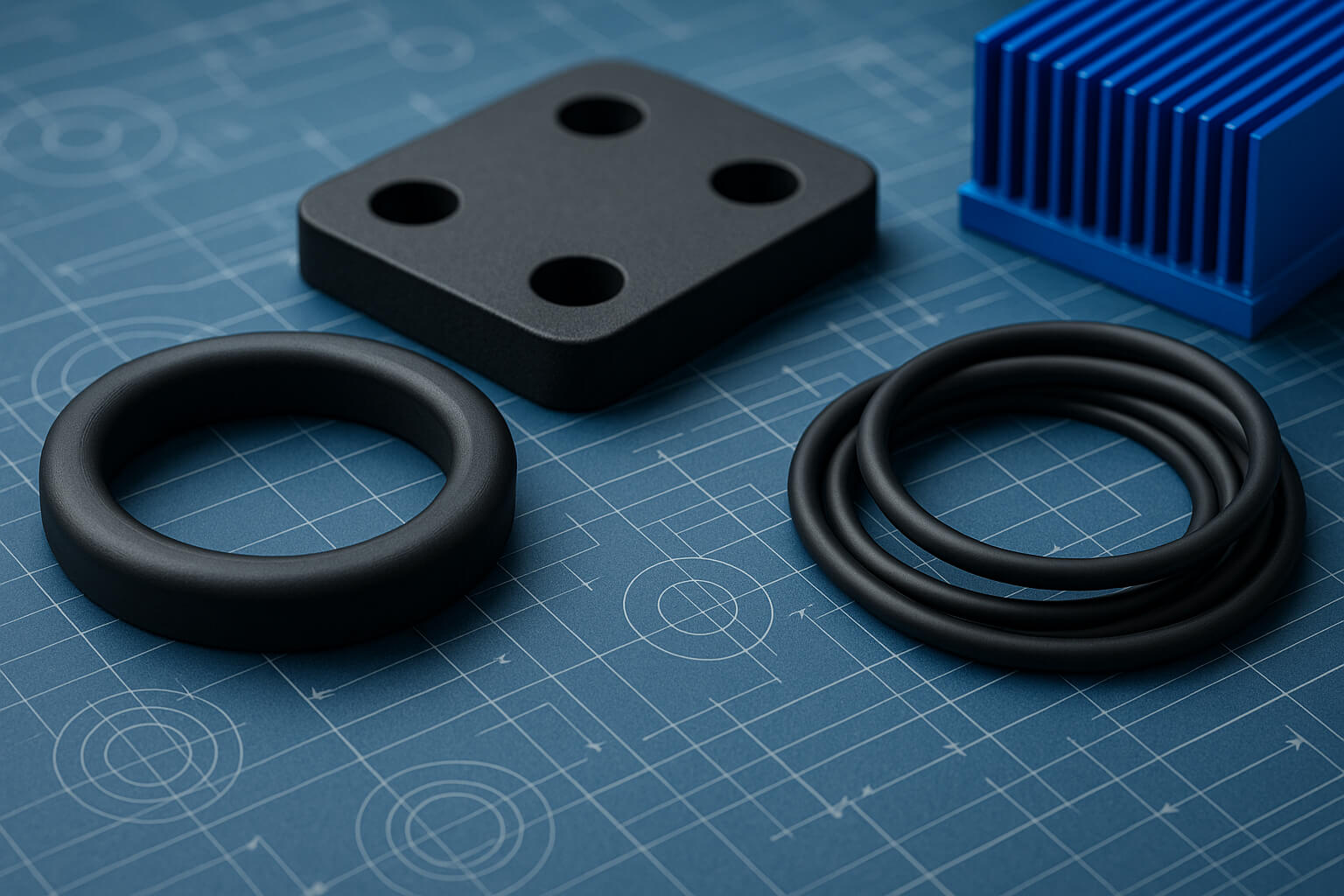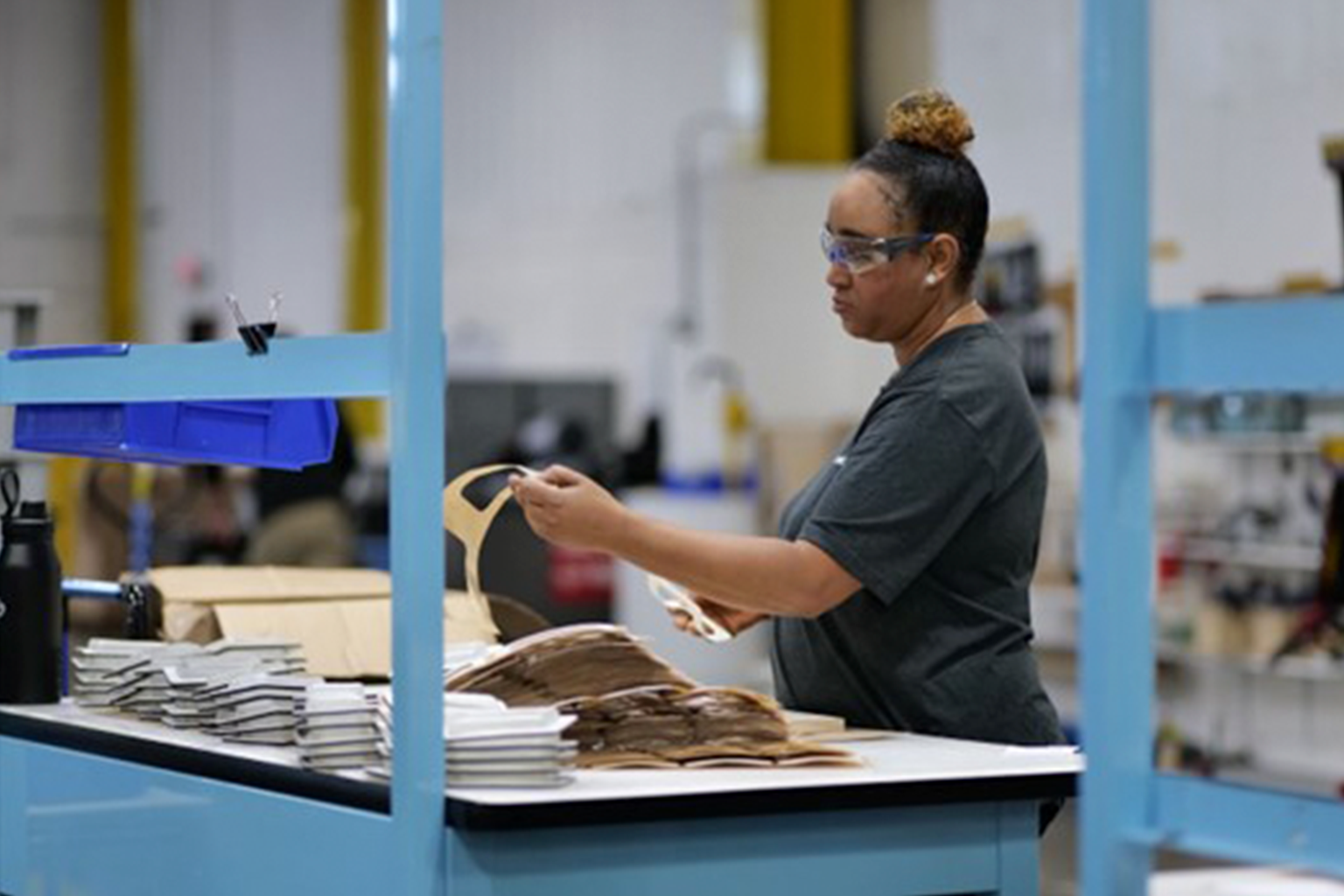
Silicone elastomers are essential materials in modern engineering, providing flexibility, durability and high-performance capabilities across various industries. Their compressibility, combined...

In the electronics market, the integrity of each product’s components is critical. Sur-Seal champions this principle, providing a wealth of material solutions tailored to sustain the durability and functionality of your electronic devices.
Quick Links
In the electronics industry, longevity is key. The adhesives that bind components are just as crucial as the high-quality materials they join. With several applications, selecting the ideal adhesive impacts both assembly processes and product life span. Rubber-based and acrylic-based adhesives stand out in the electronics sector, each with unique properties suited for specific scenarios.
Rubber-based adhesives are the go-to for swift assembly needs. Here’s why they are often the first choice:
Imagine you’re assembling a handheld electronic device where internal components need temporary fixation before permanent setting. Rubber-based adhesives could hold the parts in position with enough strength to withstand pre-installation handling and positioning before following up with permanent fastenings.
For scenarios demanding durability and environmental staying power, acrylic-based adhesives shine. They offer:
Consider an LED light panel that must withstand fluctuating outdoor temperatures and exposure to sunlight. An acrylic-based adhesive would be the ideal choice for attaching components due to its capacity to maintain a reliable bond in harsh and changing environments.
Rubber-based adhesives are ideal for immediate, strong, and flexible bonding – perfect for quick fixes and components that require a temporary hold before final assembly – while acrylic-based adhesives are the go-to for enduring, heat-resistant, and environmentally stable applications, where a permanent bond is critical for product longevity.
Knowing the difference between rubber-based versus acrylic-based adhesives is critical in selecting your ideal application solution. Whether it’s the immediate stickiness and flexibility of rubber-based glues or the long-term resilience and environmental tolerance of acrylic-based options, the success of an electronic product may hinge on this choice.
Have any questions about our adhesive services? Give us a call today at 513-574-8500 or contact us online!

Selecting the ideal gasket material is as critical as the means of bonding product components. Gasket materials come with varying compression set levels, and it’s essential to match the material’s properties with your product’s requirements.
Materials with a low compression set rebound almost to their original form after being compressed. This characteristic is crucial for:
Take, for instance, a battery compartment door on a remote control. A gasket made from low compression set material will ensure the door seals tightly each time it’s closed without becoming flattened over time.
On the other hand, materials with a high compression set deform permanently under pressure and are best for:
A high-compression set gasket is preferred for electronic casings requiring a one-time seal. It will conform to the space and create a lasting barrier against external elements.
Low-compression gaskets are ideal for applications that demand resilience and frequent usage, ensuring a reliable seal with each access. In contrast, high-compression gaskets excel in applications where a steadfast and enduring seal is essential, safeguarding against long-term wear and environmental pressures.
Understanding the level of compression set needed for your product ensures that you maintain its integrity and function. Selecting the wrong gasket material can lead to a compromised seal and potential product failure. This decision is a key factor in the longevity and reliability of your electronic devices.

Understanding the distinctions between open-cell and closed-cell foam is crucial when choosing gasket materials for electronic components.
Open-cell foam, characterized by its interconnected cells, offers several advantages:
Open-cell foam gaskets are ideal for applications like acoustic insulation in electronic devices where sound damping is required or enclosures that need to ‘breathe’ while filtering out environmental debris.
Closed-cell foam stands out with different attributes:
Closed-cell foam is the go-to for sealing enclosures that must be waterproof or resistant to other liquids, such as outdoor electronic housings or devices exposed to harsh conditions.
Both foam material types are important in preventing environmental factors from affecting electronic products, yet their individual properties cater to very specific uses.
Open-cell foam is the choice for applications requiring frequent access or cushioning, while closed-cell foam is the solution for permanent seals and robust protection.
Choosing between open-cell and closed-cell foam gaskets can directly impact the longevity and reliability of your electronic products. Select wisely to ensure your product performs optimally throughout its life cycle, free from unwanted interference.
Recommended Reading:
Looking to get started with Sur-Seal’s foam services? Call us today at 513-574-8500 or contact us online to get started.

Heat management is a priority factor in the design and function of electronics. To prevent component failure due to overheating, selecting the appropriate thermal management materials is as critical as choosing the right gasket or adhesive.
The two predominant materials used for heat dissipation in electronic components are thermal grease, thermal pads, and thermal tape:
Understanding the distinctions and applications of these thermal materials is vital. While thermal tape is uniquely efficient for mounting applications, thermal grease, and pads are more directly comparable.
Thermal pads are superior to sustained, reliable heat management in high-performance devices.
When it comes to mounting and moderate heat dissipation needs with the added benefit of strong adhesion, thermal tape is the optimal selection.
Recommended Reading:

Now that we’ve tackled thermal management, let’s guard against another type of disruption: electromagnetic interference (EMI) from various electronic devices. Proper shielding materials are essential for safeguarding your product against these electromagnetic frequencies (EMFs).
There are two main types of materials used for EMI shielding:
Once you understand the material types, you can select the right one for your needs.
Blocking materials are the go-to for absolute interference exclusion.
Conductive materials are best for managing and mitigating interference effects.
Each material type is tailored to specific shielding requirements. Selecting the correct EMI shielding is crucial for the reliability of your product, particularly in advanced electronics like military-grade communication devices.
Recommended Reading:

With EMI out of the way, attention shifts to acoustics — addressing how noise can impact the performance and customer satisfaction of electronic goods. From buzzing electronics to humming fans, noise can be a nuisance, but it’s manageable with the appropriate materials.
We categorize acoustic materials into four groups based on their function:
Key materials for mitigating noise and acoustic disturbances include:
Selecting the right acoustic material is crucial for user experience and functionality. It’s about balancing performance with user interaction, ensuring your electronic product runs quietly, safely, and effectively in its intended environment.
Recommended Reading:
Ensuring electronic devices are impervious to environmental conditions is pivotal. The very integrity and longevity of a product could be compromised by environmental elements unless adequately shielded with seals.
The trio of environmental contaminants most detrimental to electronics includes:
The selection of materials for environmental seals is tailored to combat these specific challenges:
Additionally, thermal considerations are of primary concern. Material choices like rubber may degrade in high-temperature scenarios. In contrast, silicone exhibits resilience across a wide temperature range, making it suitable for electronics that will be exposed to various outdoor climates.
The risks of corrosion, malfunction, and wear are markedly reduced by safeguarding electronics from the triple threat of moisture, dust, and debris. It’s safe to say the correct choice of shielding materials is not a one-size-fits-all solution but a strategic decision based on specific environmental exposures and the electronic device’s operational demands.
Equipped with the right knowledge of protective materials, you can substantially enhance the durability and reliability of your electronic products.
In the electronics industry, the difference between mediocrity and excellence often lies in the details, including the materials chosen for product design and manufacturing. As innovators and producers, we aim to deliver top-tier products that resonate with our consumers.
This guide is your stepping stone toward achieving that goal. It is an excellent resource to help you navigate the complexities of the electronics market, ensuring your offerings are not just competitive but exemplary.
Considerations of adhesives, gaskets, thermal management, electromagnetic interference (EMI) shielding, acoustics, and environmental protection are crucial to addressing potential challenges from a preventative standpoint. Whether your product line includes cutting-edge smartphones, high-performance computing devices, or specialized communication radios, your material decisions are pivotal.
Here are key critical questions to help guide your material selection:
Armed with the insights from this guide, you’re well-equipped to confidently navigate the challenges and considerations necessary to craft electronics that are not just fit for purpose but are also enduring and reliable. Strong products are built on the foundation of carefully chosen materials, and this guide empowers you to choose the materials that align perfectly with your project’s needs and set the wheels in motion toward realizing products that not only meet but exceed your exacting standards.
Should you find yourself seeking further clarification or needing expert help navigating the subtleties of material selection for your electronics, Sur-Seal’s team of engineers and materials specialists is happy to assist you.
Always happy to help and provide personalized assistance, our team is on standby, ensuring that your next project is well-supported with critical information and the hands-on expertise that can only come from those who know the intricacies of material science as it applies to your unique market and application.